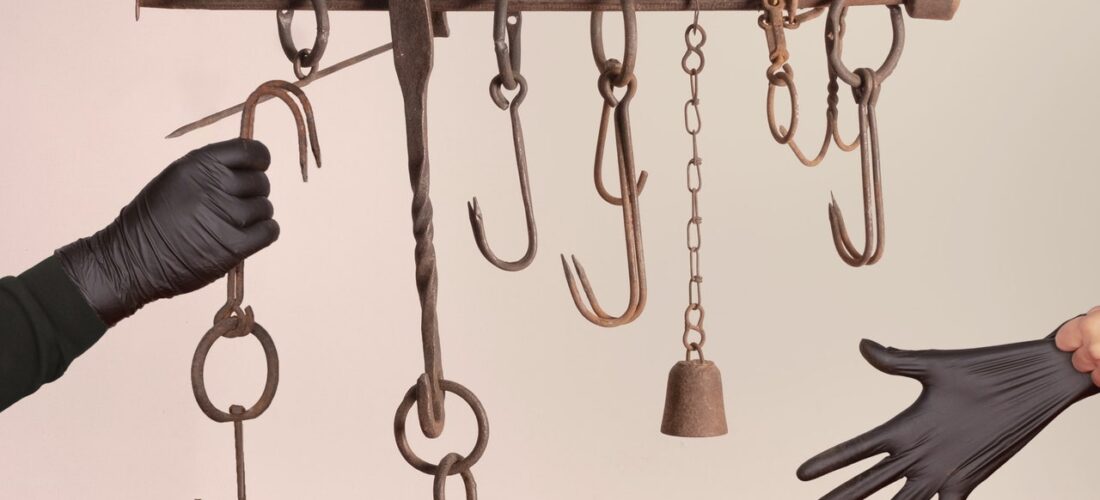When Suicide were playing piss-stained clubs in the 1970s, they did so in fear for their very lives. Their hostile, slow-burning synth-punk infuriated some concertgoers so much that singer Alan Vega and keyboardist Martin Rev got accustomed to dodging airborne objects. Bottles on a good night. Rocks, occasionally. And one time: an ax. Barcelona experimental duo Dame Area, who count Suicide among their chief influences, might have met the same fate had they not emerged decades later from Màgia Roja, an underground club, label, and creative incubator that shuttered in 2019. Co-founded by Dame Area producer Viktor Lux Crux five years prior, Màgia Roja’s 100-capacity venue was so welcoming—of punks, visual artists, hippies, suits—that performers weren’t even elevated on a stage; they were on the ground with everybody else.
Crux met Dame Area vocalist Silvia Konstance when they were working and living at Màgia Roja, and the two started churning out demos in 2017. Across a handful of albums and EPs, they’ve drawn upon a dynamic set of styles: early industrial like Throbbing Gristle, Nurse With Wound, and Einstürzende Neubauten; Franco Battiato’s electro-lounge period; even an unlikely Italian opera piece that informed their 2018 release Centro di Gravitá. Dame Area’s voracious approach to genre seems directly linked to the time they spent under Màgia Roja’s roof, sweating alongside various subcultures. In 2022, Konstance and Crux even went pop…ish. Toda la mentira sobre Dame Area (All the Lies About Dame Area) is a chrome-sleek hybrid of new wave à la Gary Numan, Italo disco, and synth arpeggios fit for a bender at Berghain. For their new companion LP, Toda la verdad sobre Dame Area (The Whole Truth About Dame Area), Crux and Konstance take a crowbar to that polished exterior and produce their rawest sound yet.
Toda la verdad, which clocks in at a bracing 36 minutes, bottles the jagged ferocity of Dame Area’s live shows. Their armory of synths and drum pads mimic everything from bashed trash-can lids to a dentist drill to a machine gun emptying its magazine. Konstance—who sings in her native Italian, as well as Spanish, Turkish, and German—can sound chipper and childlike in one breath and demonic in the next. On Toda la verdad she leans into the rage, yelping and snarling like a wounded animal on “Striscia,” and screaming like a blast of TV static on “Devoción.” “How can I do it without power?/I’ve decided: I’ll learn to burn, I’ll learn to bite,” Konstance belts in Spanish on searing opener “Si no es hoy cuándo es.” Crux amplifies her wrath with buzzsaw synths and blast-beat percussion.
